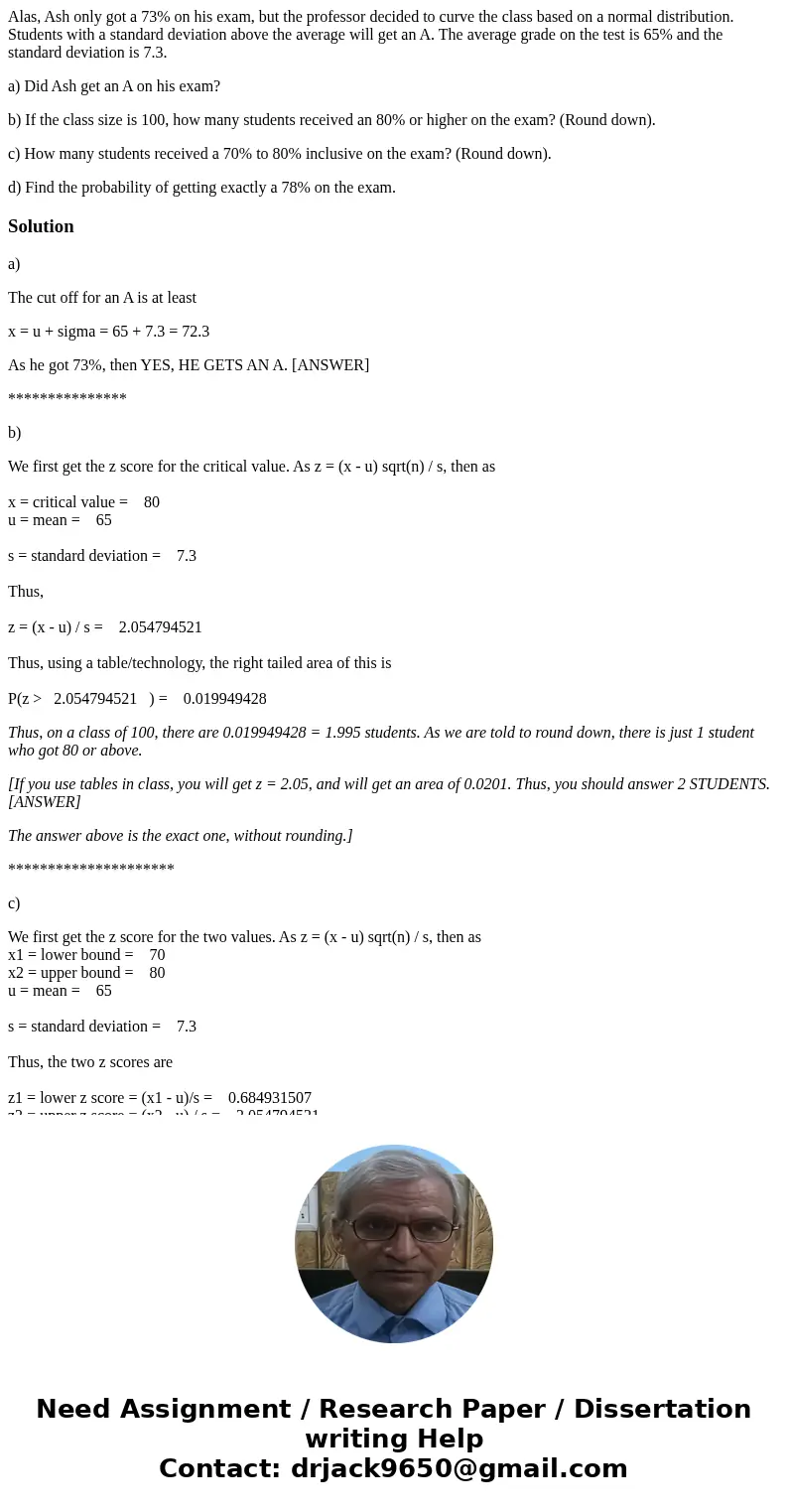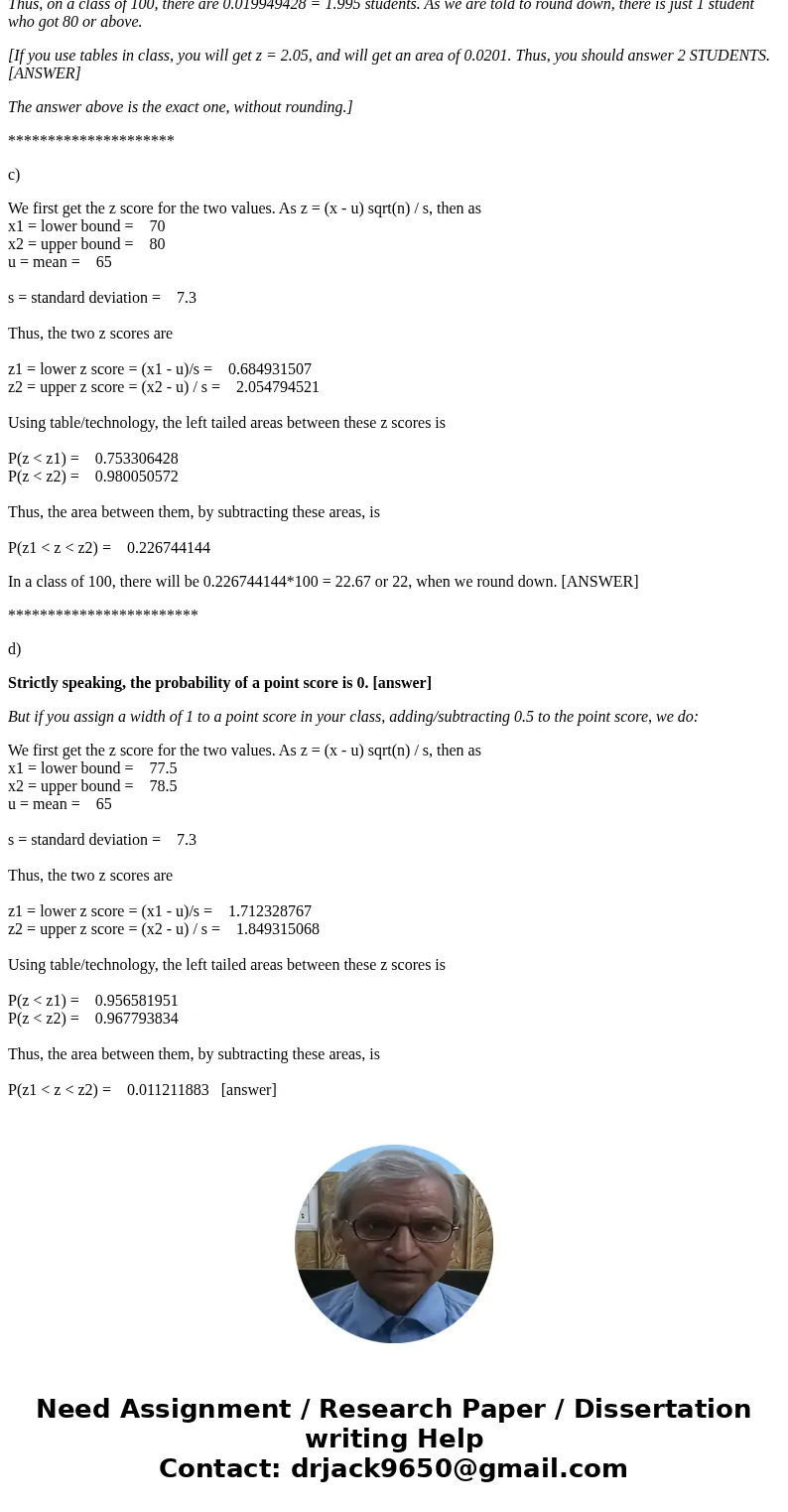Alas Ash only got a 73 on his exam but the professor decided
Alas, Ash only got a 73% on his exam, but the professor decided to curve the class based on a normal distribution. Students with a standard deviation above the average will get an A. The average grade on the test is 65% and the standard deviation is 7.3.
a) Did Ash get an A on his exam?
b) If the class size is 100, how many students received an 80% or higher on the exam? (Round down).
c) How many students received a 70% to 80% inclusive on the exam? (Round down).
d) Find the probability of getting exactly a 78% on the exam.
Solution
a)
The cut off for an A is at least
x = u + sigma = 65 + 7.3 = 72.3
As he got 73%, then YES, HE GETS AN A. [ANSWER]
***************
b)
We first get the z score for the critical value. As z = (x - u) sqrt(n) / s, then as
x = critical value = 80
u = mean = 65
s = standard deviation = 7.3
Thus,
z = (x - u) / s = 2.054794521
Thus, using a table/technology, the right tailed area of this is
P(z > 2.054794521 ) = 0.019949428
Thus, on a class of 100, there are 0.019949428 = 1.995 students. As we are told to round down, there is just 1 student who got 80 or above.
[If you use tables in class, you will get z = 2.05, and will get an area of 0.0201. Thus, you should answer 2 STUDENTS. [ANSWER]
The answer above is the exact one, without rounding.]
*********************
c)
We first get the z score for the two values. As z = (x - u) sqrt(n) / s, then as
x1 = lower bound = 70
x2 = upper bound = 80
u = mean = 65
s = standard deviation = 7.3
Thus, the two z scores are
z1 = lower z score = (x1 - u)/s = 0.684931507
z2 = upper z score = (x2 - u) / s = 2.054794521
Using table/technology, the left tailed areas between these z scores is
P(z < z1) = 0.753306428
P(z < z2) = 0.980050572
Thus, the area between them, by subtracting these areas, is
P(z1 < z < z2) = 0.226744144
In a class of 100, there will be 0.226744144*100 = 22.67 or 22, when we round down. [ANSWER]
************************
d)
Strictly speaking, the probability of a point score is 0. [answer]
But if you assign a width of 1 to a point score in your class, adding/subtracting 0.5 to the point score, we do:
We first get the z score for the two values. As z = (x - u) sqrt(n) / s, then as
x1 = lower bound = 77.5
x2 = upper bound = 78.5
u = mean = 65
s = standard deviation = 7.3
Thus, the two z scores are
z1 = lower z score = (x1 - u)/s = 1.712328767
z2 = upper z score = (x2 - u) / s = 1.849315068
Using table/technology, the left tailed areas between these z scores is
P(z < z1) = 0.956581951
P(z < z2) = 0.967793834
Thus, the area between them, by subtracting these areas, is
P(z1 < z < z2) = 0.011211883 [answer]


 Homework Sourse
Homework Sourse